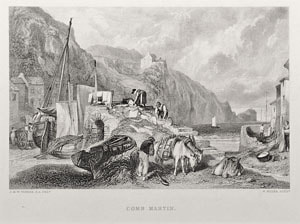
William Miller (1796-1882)
Miller was born in Edinburgh from where his father sent him to London to learn engraving from George Cooke in 1819.
According to Bryan’s Dictionary, ‘The great bulk of his work is after [J M W] Turner. [John] Ruskin speaks of him as the best of Turner’s engravers. In the last half of his life, he travelled a good deal, and also practised painting in water-colour.’
Miller was elected an honorary member of the Royal Scottish Academy in 1862.
Collections
British Museum, London
Metropolitan Museum, New York
Royal Academy, London
National Portrait Gallery, London
Tate Gallery, London
Victoria and Albert Museum, London
Literature
Gray, B (1937), The English Print, Adam and Charles Black
Hind, A M (1963 reprint), A History of Engraving and Etching, Dover Publications
Mackenzie, I (1988), British Prints, Antique Collectors’ Club
Williamson, G C Ed. (1904), Bryan’s Dictionary of Painters and Engravers, George Bell and Sons
Miller was born in Edinburgh from where his father sent him to London to learn engraving from George Cooke in 1819.
According to Bryan’s Dictionary, ‘The great bulk of his work is after [J M W] Turner. [John] Ruskin speaks of him as the best of Turner’s engravers. In the last half of his life, he travelled a good deal, and also practised painting in water-colour.’
Miller was elected an honorary member of the Royal Scottish Academy in 1862.
Collections
British Museum, London
Metropolitan Museum, New York
Royal Academy, London
National Portrait Gallery, London
Tate Gallery, London
Victoria and Albert Museum, London
Literature
Gray, B (1937), The English Print, Adam and Charles Black
Hind, A M (1963 reprint), A History of Engraving and Etching, Dover Publications
Mackenzie, I (1988), British Prints, Antique Collectors’ Club
Williamson, G C Ed. (1904), Bryan’s Dictionary of Painters and Engravers, George Bell and Sons
Our selection of antique prints after J M W Turner, including work by William Miller can be viewed here.